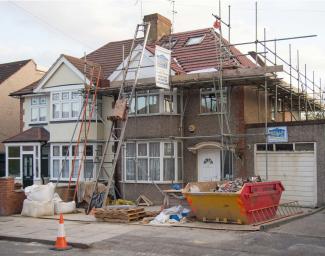
Understanding Your Home's Tax Basis and Capital Improvements
When it comes time to sell your home, understanding the concept of tax basis is crucial. Your home’s tax basis is essentially the amount used to calculate any taxable gain when you sell it. This basis includes not only what you originally paid for the property but also certain improvements you've made over the years.
What is Included in Your Home’s Tax Basis?
Your home’s tax basis consists of several components:
-
Purchase Price: This is the amount you paid to buy the home initially. It includes any settlement fees or closing costs you paid.
-
Closing Costs: These are expenses incurred when finalizing the purchase of your home, such as legal fees, title insurance, and recording fees.
-
Capital Improvements: These are enhancements that increase the value of your property, prolong its useful life, or adapt it to new uses. Examples include:
-
Remodeling: Major renovations that significantly improve the value or extend the life of a part of your home, such as adding a new room or completely renovating a kitchen.
-
Landscaping: Significant improvements to your yard, like installing a patio or putting up a fence.
-
Systems Upgrades: Upgrades to essential systems such as heating, ventilation, and air conditioning (HVAC), electrical wiring, or plumbing.
-
Roof Replacement: Installing a new roof generally counts as a capital improvement because it adds value and extends the home’s life.
-
How Capital Improvements Impact Taxation
Capital improvements are significant because they can increase your home’s value and potentially reduce your taxable gain when you sell. These improvements must add value to the property, enhance its use, or prolong its life to qualify for inclusion in the tax basis calculation.
Calculating Your Taxable Gain
When you sell your home, the taxable gain is determined by subtracting the adjusted basis from the selling price. To calculate the adjusted basis, you start with the original purchase price and add the cost of any capital improvements you made, as well as any eligible closing costs.
Example:
Imagine you purchased your home for $250,000. Over the years, you spent $30,000 on a kitchen remodel and $10,000 on landscaping. Your adjusted basis would be:
$250,000 (purchase price) + $30,000 (kitchen remodel) + $10,000 (landscaping) = $290,000
If you sell your home for $350,000, your taxable gain would be $350,000 - $290,000 = $60,000.
The IRS has more specifics on capital gain and loss information here.
Keep Records of Improvements
It’s crucial to keep detailed records of all improvements you make to your home. Save invoices, receipts, and any other documentation that proves the cost of these improvements. This documentation will be necessary when you calculate your adjusted basis and taxable gain upon selling your home.
Consult with Us
Understanding your home’s tax basis and the impact of capital improvements can help you make informed decisions when it’s time to sell. By keeping careful records and understanding what qualifies as a capital improvement, you can potentially reduce your taxable gain and maximize your financial benefits from selling your home. For expert guidance tailored to your situation, contact us today. We are dedicated to helping you achieve your financial goals with confidence.

